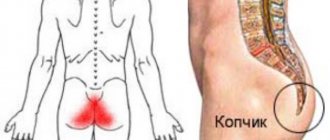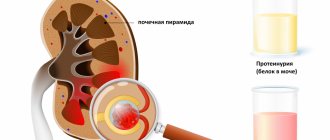Every person suffers from headaches from time to time. Occasional pain usually does not cause concern and is easily relieved with painkillers, but for a number of patients this pathology becomes an integral part of existence, significantly worsening the quality of life.
Headache in the forehead is a fairly common phenomenon in all age groups of the population. In order to cope with it, you need to approach this issue carefully, listen carefully to your body, try to identify the factors that provoke the occurrence of pain and be sure to consult with a specialist.
Causes of pain
The head in the forehead area can hurt without damage to the internal organs. The cause may be mental fatigue. For knowledge workers, tension accumulates in the center of the forehead. At the end of the working day, a pressing feeling arises. A light massage of a point in the center of the forehead, and then upward, to the sides, will help to remove it.
Head pain in the forehead area may occur due to poisoning by toxic fumes. Such sensations often haunt employees of household chemicals and building materials stores. Low-quality products have a strong odor and emit fumes that cause pain, dizziness, and nausea. People who are sensitive to this should change their job or profession, and wear a respirator before leaving.
Severe headaches are sometimes caused by cerebral vasospasm. This condition manifests itself against the background of smoking, alcohol abuse, and sometimes due to changes in climate zones. Pain can also be triggered by physical or emotional stress.
Read also: Sweating head
Sources
- Joswig H., Abdallat M., Karapetyan V., MacDougall KW., Cooper PE., Parrent AG. Long-term Experience with Occipital and Supraorbital Nerve Stimulation for the Various Headache Disorders—a Retrospective Institutional Case Series of 96 Patients. // World Neurosurg - 2021 - Vol - NNULL - p.; PMID:33905904
- Kjeldsberg M., Tschudi-Madsen H., Mdala I., Bruusgaard D., Natvig B. Patients in general practice share a common pattern of symptoms that is partly independent of the diagnosis. // Scand J Prim Health Care - 2021 - Vol - NNULL - p.1-10; PMID:33905284
- Holla VV., Gohel AB., Kartik N., Netravathi M. Acute Necrotizing Encephalopathy as a Complication of Chikungunya Infection. // Neurol India - 2021 - Vol69 - N2 - p.490-492; PMID:33904484
- Murthy JMK., Challa S., Parida S., Murthy TVRK., Basha Paspala SA. Primary Angiitis of Central Nervous System-Tumor-Like Mass Lesions: Report of Six Biopsy Confirmed Cases. // Neurol India - 2021 - Vol69 - N2 - p.451-456; PMID:33904474
- Doddamani RS., Meena R., Sawarkar D., Singh P., Agrawal D., Singh M., Chandra PS. Robot-guided Ventriculoperitoneal Shunt in Slit-like Ventricles. // Neurol India - 2021 - Vol69 - N2 - p.446-450; PMID:33904473
- Srinivasa R., Chandrakiran C., Luckose R. Bilateral Posterior Nasoseptal Flap - Double Breasting Technique. // Neurol India - 2021 - Vol69 - N2 - p.307-310; PMID:33904440
- Dhiman V., Menon GR., Kaur S., Mishra A., John D., Rao Vishnu MV., Tiwari RR., Dhaliwal RS. A Systematic Review and Meta-analysis of Prevalence of Epilepsy, Dementia, Headache, and Parkinson Disease in India. // Neurol India - 2021 - Vol69 - N2 - p.294-301; PMID:33904437
- Pillutla V., Patel A., Koneru S., Ng KK., Ng MK. A Case Report of Severe Hyponatremia Secondary to Coronavirus Disease 2021 Viral Pneumonia. // Cureus - 2021 - Vol13 - N3 - p.e14077; PMID:33903839
- Jolobe OMP. The differential diagnosis of the association of headache and ST segment elevation. // Am J Emerg Med - 2021 - Vol - NNULL - p.; PMID:33902959
- Huang J., Wang L. Elderly Man With Persistent Headache. // Ann Emerg Med - 2021 - Vol77 - N5 - p.e103-e104; PMID:33902840
Possible diseases
In some cases, the head hurts in the forehead and there is pressure due to pathologies of the internal organs. Associated diseases:
- infections: acute respiratory viral infections, acute respiratory infections (cause a rise in temperature and intoxication, which is why the head hurts and puts pressure on the forehead);
- ENT diseases: sinusitis, ethmoiditis, frontal sinusitis (a characteristic symptom is severe nasal congestion);
- inflammation of the membranes of the brain: encephalitis, meningitis (accompanied by fever);
- pathologies of the nervous system: migraine (pain intensifies due to sounds, bright light, and recedes in silence and darkness), neuralgia (sharp, severe pain);
- injuries: concussions, skull fractures, bruises of the soft tissues of the head;
- diseases of the cardiovascular system: changes in intracranial pressure, hypertension, atherosclerosis, neurocirculatory dystonia;
- endocrine disorders: pathologies of the thyroid gland, adrenal glands;
- ophthalmological diseases: changes in intraocular pressure, uveitis, inflammation of the optic nerve, myopia;
- oncological pathologies: brain tumor, neoplasms in the sinuses or pituitary gland.
Headaches in the forehead area can occur against the background of a large number of diseases. A comprehensive examination of the body will allow you to identify and eliminate the provoking factor.
When to go to the doctor
If you know exactly the cause of the headache, for example, alcohol taken the day before, lack of sleep, fatigue, stress, there is no need to go to the doctor. After proper rest and normalization of the emotional state, the headache will go away on its own.
A visit to the doctor is necessary for symptoms of migraine, prolonged headaches accompanied by other alarming symptoms, deterioration in general health, decreased ability to work, or persistent increase in blood pressure.
If I have a headache, should I get tested for COVID-19?
The acute phase of COVID-19, like any other viral disease, may be accompanied by a headache. When infected with coronavirus, migraine-type pain may occur, which intensifies as toxins spread and enter the blood vessels of the brain. But headache is not the only and not the most common symptom of infection. If you don’t have a cough or fever, you don’t have to rush to take the test.
Diagnostics
People come to a therapist and neurologist with headaches. Additionally, patients are asked to undergo an examination by an ophthalmologist to assess the condition of the fundus. Further testing to determine the cause of headaches includes:
- complete blood count to rule out infections;
- EEG - determines the electrical activity of the brain, detects epileptic activity, migraine;
- ECG - checking the state of the cardiovascular system;
- analysis of thyroid hormone levels;
- Ultrasound of the vessels of the neck and head;
- Ultrasound of the thyroid gland;
- X-ray of the cranial sinuses - to determine ENT diseases.
Even a complete examination does not guarantee that the cause of the pain will be discovered. But it allows you to exclude serious diseases or identify them and select therapy.
Read also: Headaches in the temple area
Causes of headaches in the forehead area
Frontal pain is rarely associated with pathologies of this area of the brain. More often they are a projection of painful sensations that occur in other areas. Establishing the cause of such a symptom is important to determine the correct treatment tactics. The Clinical Brain Institute offers comprehensive diagnostic programs for forehead pain, using advanced technologies and high-quality equipment.
Tension headache
Tension headache (tension headache) is the most common cause. This symptom periodically appears even in healthy people when they are overtired or have a disrupted sleep schedule. In addition, it can be a consequence of incorrect posture, excessive tension in the muscles of the back and neck. Tension headaches can be identified by characteristic symptoms:
- begins in the forehead, temples or behind the eyes;
- can spread to the entire surface of the head;
- increased sensitivity in the face, neck and shoulder girdle;
- sensation of squeezing around the head.
Most often, these headaches go away within a few hours, but in some patients they can last for several days. If they occur once, rest, prolonged sleep, massage or exercises for the neck muscles are recommended. You should consult a doctor if you have a headache for more than 5 days in a row or for a total of more than 15 days a month. The difference between HDN is the positive effect from the use of any analgesics. For quick relief from pain, it is recommended to take a drug based on ibuprofen, paracetamol or aspirin. They are sold without a doctor's prescription, but you should not abuse them.
Cluster pain in the forehead area
Cluster pain is a rare occurrence. They are characterized by an acute onset and a high degree of pain, and can occur at any time of the day. More often they are one-sided and can be localized in the forehead or temples. It has not yet been possible to find out their exact cause, but a hereditary predisposition has been established, as well as the influence of bad habits. Cluster headaches are an acute attack that significantly affects performance and reduces the quality of daily life. They may be accompanied by additional symptoms:
- disorders of the nervous system, feelings of fear or excitement;
- nasal congestion, mucous discharge from the sinuses;
- swelling of the mucous membrane of the eyes, lacrimation.
Cluster headaches cannot be treated at home. If they appear, you should consult your doctor. Their treatment will require a comprehensive diagnosis, based on the results of which a course of drug therapy will be prescribed. The following drugs are effective against such pain: calcium channel blockers, corticosteroids, sumatriptan and others. It is not recommended to take them without a doctor's prescription.
Tired eyes
Eye pain may also spread to the forehead area. These sensations can be confused, since visual fatigue is accompanied by a deterioration in general well-being. The pain begins behind the eyes and spreads to the frontal lobe. Its manifestations are similar to tension headaches: they occur against the background of overwork or active mental work, last from several hours to several days, and are easily relieved with over-the-counter analgesics.
Pain in the forehead area can be caused by the following factors:
- prolonged eye strain (while reading or working at a monitor);
- incorrect posture, curvature of the spine;
- the need to focus for a long time on small details located at the same distance from the eyes;
- stress, lack of vitamins in the diet, infectious diseases.
If frontal pain occurs, which is accompanied by fatigue and dry eyes, an examination by an ophthalmologist is required. Myopia or farsightedness, astigmatism in one or both eyes - these conditions require mandatory correction. It is also useful to perform eye exercises throughout the day. It includes exercises in which you need to focus alternately on distant and near objects, movements to strengthen the eye muscles. When working at a monitor, it is recommended to use anti-glare filters, as well as take short breaks during the day. In pharmacies you can purchase special vitamin complexes designed to protect vision, or drops against dry eyes.
Sinusitis
Pain in the forehead is one of the first symptoms of inflammation of the paranasal sinuses. They are natural cavities filled with air. In the structure of the human skull, there are several paired paranasal sinuses: maxillary (maxillary), frontal, sphenoid, and ethmoid sinuses. They have anastomoses that connect them to the nasal cavity. Inflammation of these structures can be caused by a viral or bacterial infection, and in rare cases, by fungal pathogens.
Sinusitis is an inflammation of the maxillary (maxillary) sinus, a chronic infectious disease. It can also be caused by inflammatory processes in the teeth, which spread to the paranasal sinuses. The first way to diagnose sinusitis is to lean forward and lower your head down. This movement will cause sharp pain not only in the frontal part of the head, but also in the nose and maxillary sinuses. The disease is chronic, and in the acute stage it manifests itself with characteristic symptoms:
- impaired nasal breathing;
- lacrimation, especially when exposed to bright light;
- the appearance of nasal discharge - it can be mucous or contain impurities of pus;
- decreased sense of smell.
Another form of sinusitis is frontal sinusitis, inflammation of the frontal sinuses. This disease is manifested by pressing pain in the forehead, which occurs in the morning and intensifies during the day. It can only be gotten rid of by emptying the sinuses of their contents. To treat frontal sinusitis, vasoconstrictor drugs are prescribed, as well as anti-inflammatory, antibacterial and painkillers. At home, you can relieve pain with simple analgesics, but it is important to consult a doctor in time. Some cases of sinusitis (sinusitis, sinusitis) require surgical intervention. Untimely treatment is dangerous due to the spread of infection to the membranes of the brain and the development of meningitis. Simpler cases can be successfully treated with nasal sprays.
Arteritis
A rare cause that also cannot be excluded when diagnosing headaches is giant cell arteritis. The disease occurs more often in older people and is associated with inflammation of the walls of large arteries. They become dense and clearly appear above the surface of the skin. The main symptom that indicates the development of the disease is acute pain in the frontal and temporal regions. Additionally, the pathology can cause the following symptoms:
- painful sensations in the masticatory muscles, which intensify when talking, chewing or swallowing;
- decreased visual acuity;
- sudden weight loss;
- muscle weakness, pain in skeletal muscles;
- feeling of weakness, general fatigue, increased body temperature.
Treatment for giant cell arteritis must be prescribed by a doctor. The main method of therapy is the systemic use of steroidal anti-inflammatory drugs. The disease is systemic and prone to progression, so delaying its treatment is dangerous. The affected vessels gradually atrophy, and ulcers may appear above their surface.
Other reasons
A headache in the forehead can be a consequence of overwork, poor diet, or sleep disturbances. In such cases, the easiest way to treat it is proper rest. Many patients come to the Clinical Brain Institute with chronic pain that is localized in the frontal lobe and then spreads to the entire surface of the head. They begin spontaneously and can be associated with changes in weather conditions and physical activity. Such symptoms indicate migraine - chronic headaches, the cause of which cannot be determined in every case.
Painful sensations in the forehead can occur for a long time after traumatic brain injuries or spinal injuries. Another reason is osteochondrosis, a chronic disease of hyaline cartilage. As the disease progresses, they become less elastic and deformed, which leads to compression of the blood vessels and spinal nerve roots. An additional symptom is pain directly in the affected area, which intensifies with movement.
One of the common causes of headaches in the forehead is infectious diseases. This symptom precedes the development of ARVI, influenza and sore throat, simultaneously with an increase in general temperature. Then nasal discharge and lacrimation appear, which is especially intensified in bright light. These diseases do not pose a threat to the patient’s life and can be treated at home, as prescribed by a doctor. However, there are also more serious infectious pathologies that must be excluded during diagnosis:
- sharp, acute headaches with a sudden onset are a sign of typhoid and malaria;
- Dengue fever - additionally there is a feeling of aching muscles and joints;
- headache with signs of nausea and vomiting is a symptom of meningitis.
Poor diet can also cause headaches. Some foods contain potentially dangerous substances that, if consumed in large quantities, can accumulate in the body and cause unpleasant symptoms. Thus, meat, fruits and vegetables without complete heat treatment are sometimes a source of nitrates. Dietary additives, including MSG, may also affect your health. One of the common causes of chronic headaches is the systematic consumption of alcoholic beverages.
All these factors must be taken into account during diagnosis. Since there are a large number of causes of headaches, it is impossible to make a correct diagnosis at home. The Clinical Brain Institute has developed screening programs for patients with headaches. They include an examination by a therapist, otolaryngologist, ophthalmologist or neurologist, as well as a number of instrumental studies. If organic pathologies are suspected, computer or magnetic resonance imaging is recommended, which allows us to obtain a complete image of the clinical picture.
Treatment
Headaches cannot be tolerated, so during attacks you should take analgesics. These can be drugs based on paracetamol, ibuprofen, ketorol and others that help a particular patient.
The main treatment for headaches is always aimed at their cause. If there are serious pathologies of internal organs, hormone therapy or chemotherapy, drugs for migraines or epilepsy, and drugs for heart disease are prescribed. Treatment is selected individually, taking into account the results of the examination and the general condition of the patient.
Dear patients!
Remember that only a qualified doctor can make an accurate diagnosis, determine the causes and nature of the disease, and prescribe effective treatment. You can make an appointment with our specialists or call a doctor at home by calling 8-(4822)-33-00-33 Be healthy and happy!
Prevention of headaches
A healthy lifestyle is the only way to prevent headaches. They often arise as a reflection of fatigue, poor diet and bad habits. To prevent the occurrence of headaches, as well as during their treatment, it is important to follow the following rules:
- adequate sleep - not only its quantity is important, but also its regularity (sleep-wake schedule);
- correct posture - this is the only way to ensure normal blood circulation in the structures of the brain;
- physical activity;
- a well-chosen diet, no bad habits.
Doctors at the Clinical Brain Institute recommend paying attention to your well-being in a timely manner and not enduring headaches. Today, pharmacies provide a wide selection of analgesics, anti-inflammatory drugs and other drugs, but you should not get carried away with their use either. If pain lasts more than 5 days or is accompanied by additional symptoms (nausea, vomiting, fever), you should immediately consult a doctor.
What to do if your forehead hurts?
Adequate rest in silence with dim light helps to cope with painful sensations. You can self-massage your head and neck, drink herbal tea. It is necessary to reduce visual stress, adjust wakefulness and sleep patterns, and give up alcohol and smoking. If the headache is caused by other diseases, the doctor will prescribe drug therapy, and in some cases surgery may be required.
For tension headaches, non-steroidal anti-inflammatory drugs are prescribed, for migraines - triptans, for acute respiratory viral infections and influenza - analgesics and antispasmodics. For trigeminal neuralgia, anticonvulsants are effective. Preventive measures include adequate sleep, physical activity and a properly selected diet.
Does paracetamol help with headaches?
Paracetamol is an affordable and time-tested medicine for various types of pain. The drug alleviates the physical condition and has almost no side effects. The medicine helps adults and children, but requires careful dosage when used.
Paracetamol mainly acts as a pain reliever. The phenacetin derivative inhibits the production in the body of compounds responsible for sensitivity to pain - prostaglandins. At the same time, it affects the thermoregulation centers, reducing high body temperature.
Paracetamol is good for relieving headaches in acute respiratory infections. In other cases, it is worth using another analgesic or seeking medical help. In some cases, paracetamol will only dull the pain, but not solve the problem completely.
Kinds
Neurologists distinguish the following types of headaches:
- Migraine – caused by a disruption of the vascular system;
- Tension headache - mainly occurs due to excessive tension in the neck, eye muscles, as well as the muscles of the shoulder girdle and scalp aponeurosis, as well as due to chronic stress, depression;
- Chronic paroxysmal hemicrania, cluster headache - can be primary or secondary.
- Headache not associated with damage to brain structures;
- Ambus headache that occurs when taking medications uncontrolled.
There are also headaches after traumatic brain injury, with diseases of the vascular system, and those that occur with intracranial disorders of extravascular origin.
Tensor headaches often occur in women after stress or nervous shock. It goes away in the presence of positive emotions, after drinking soothing herbal teas.
Neurologists do not recommend taking headache pills on your own. Each drug is designed to relieve a specific type of pain and has a number of contraindications. The doctor takes all this into account when prescribing a medicine to a patient.
Make an appointment
Why does my head hurt after sleep?
A morning headache brings discomfort throughout the day. Night sleep is the time when, after a hard day, our body restores strength. But from time to time awakening is overshadowed by unpleasant sensations.
The reason for such an uncomfortable awakening may be:
- Uncomfortable sleeping position.
- Incorrectly chosen pillow or mattress. Ignoring this moment leads to morning pain throughout the body, including the head.
- When the condition of blood vessels deteriorates, blood pressure is disturbed, which affects the quality of our sleep. Then feeling unwell becomes frequent.
- Head injuries can also contribute to headaches in the morning. It can occur a week or a month after the injury.
- Sinusitis makes breathing difficult, which causes a headache when waking up.
- Cervical osteochondrosis is a displacement of the spine in the cervical region. With this disease, the supply of oxygen to the brain is disrupted.









